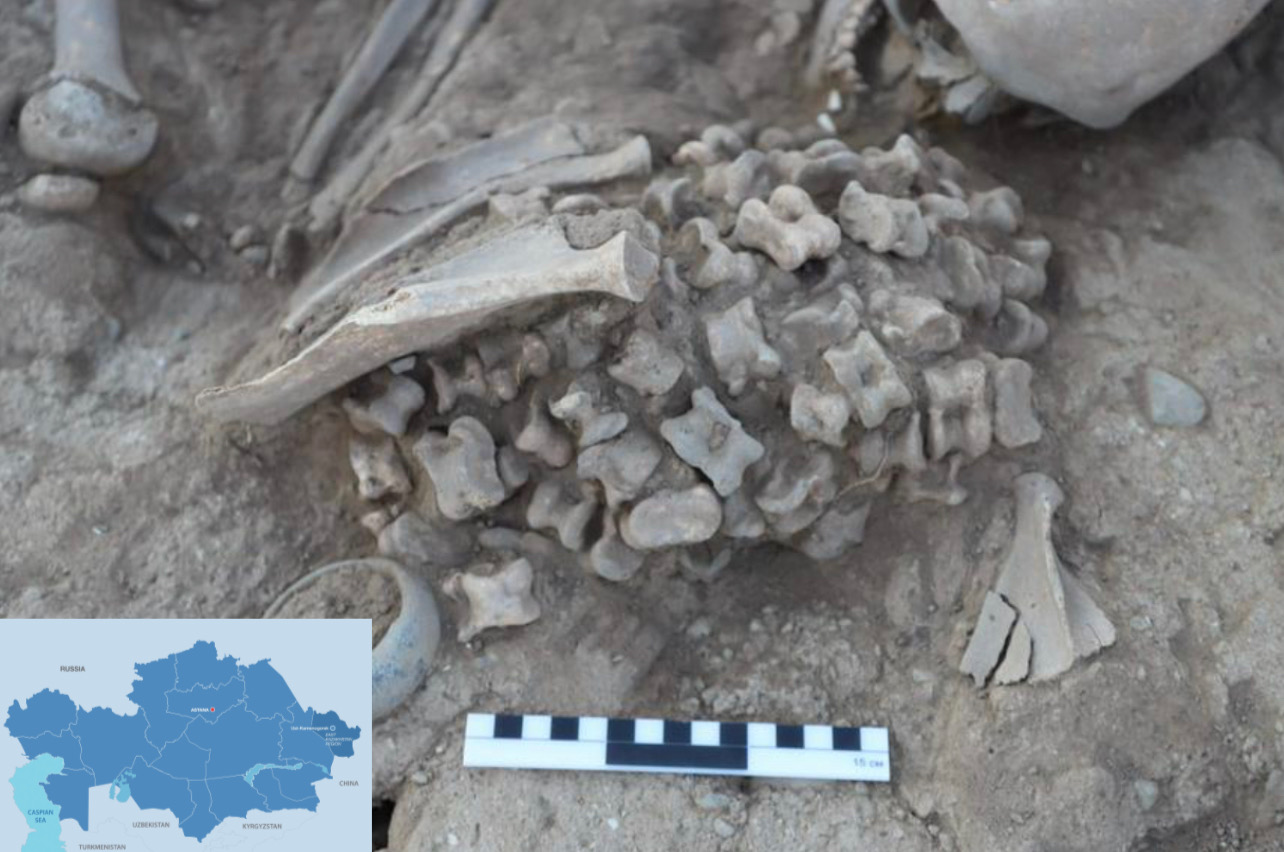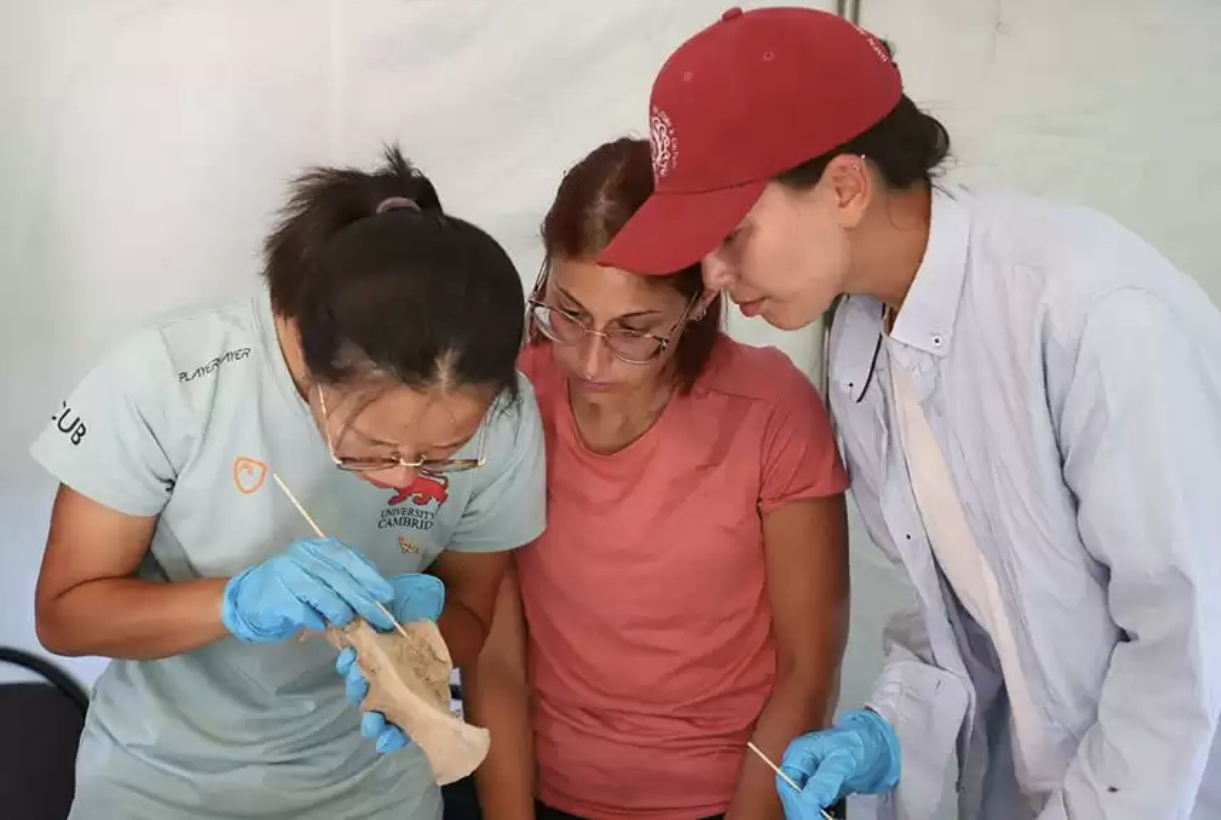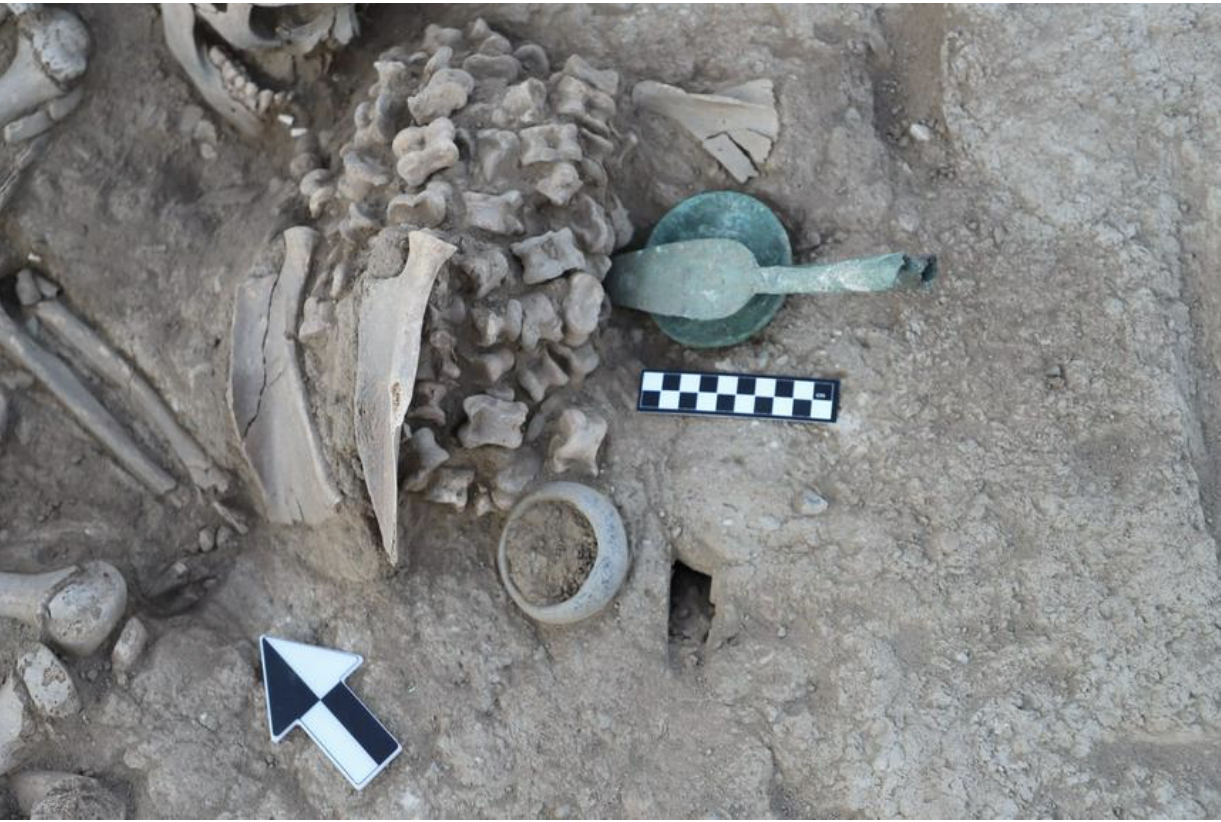ASTANA — In a series of captivating archaeological excavations that have been taking place in the East Kazakhstan region, revealing an astonishing discovery. A necropolis containing the burial of a Bronze Age woman has emerged as the focal point, shedding light on a complex tapestry of history and culture. The site’s significance has deepened with the uncovering of 180 alcoves and an exquisite silver accessory depicting a frog, reports Kazinform.

Photo credit: Rinat Zhumatayev‘s personal archive. Click to see the map in full size. The map is designed by The Astana Times.
Led by Rinat Zhumatayev, Head of the Department of Archaeology, Ethnology, and Muzology of KazNU, in collaboration with specialists from the University of Cambridge, these excavations have steadily unveiled secrets of the past. The ongoing excavations have gained momentum since 2016 when the journey to explore the region’s historical treasures commenced in the Zaisan district, spearheaded by Abdesh Toleubaev.
“The results of our work were showcased at the first international exhibition, specifically in Moscow, London, and Kazan. Thanks to the exhibition ‘Altai – the Cradle of the Turkic World,’ we have strengthened our relationship with Cambridge University. Since 2020, archaeological excavations have been conducted in collaboration with scientist Rebecca Roberts,” said Rinat Zhumatayev.
The artifacts, belonging to the Bronze Age spanning from the 25th to 18th centuries BC, were initially discovered in the ancient burial grounds of Ainabulak in 2017. Exploration continued in subsequent years in Yelek, and in 2023, focus returned to Zaisan. The unearthed artifacts are set to be displayed in the historical and local history museum of the East Kazakhstan region. Local budget allocations have facilitated the preservation of these invaluable pieces.

Photo credit: Rinat Zhumatayev‘s personal archive.
To foster knowledge exchange and collaboration, an annual international conference titled Altai – the Cradle of the Turkic World is mandated by the akimat (local administration). This platform offers local archaeologists an opportunity to interact with foreign scientists, providing them access to diverse perspectives and enriching experiences.
The archaeological initiatives have received support from specialists encompassing anthropologists, zooarchaeologists and experts in metallurgy and soil analysis. This collaborative approach has enabled the team to effectively delve into the complex layers of history.
This year, the team’s efforts have yielded additional discoveries. The Ainabulak-Temirsu burial ground has been meticulously mapped, and multiple mounds have been explored. Notably, one mound contained the remains of a woman. Beside her, an array of intriguing artifacts was uncovered, including silver dishes, 180 alcoves, and a distinctive silver item featuring a frog motif.

Photo credit: Rinat Zhumatayev‘s personal archive.
While the precise era of these discoveries remains to be determined through advanced scientific analysis, the frog-adorned artifact carries immense significance. Scholars associate the frog motif with water-related rituals found in both China and Egypt, adding an intriguing layer to the ongoing research.
“Our exploration is far from over. By the year’s end, we anticipate unveiling our findings and publishing a comprehensive scientific article,” shared Rinat Zhumataev.
These archaeological endeavors align with Kazakhstan’s commitment to nurturing scientific talent. Consistent with President Kassym-Jomart Tokayev’s vision, grants for scholars like Rinat Zhumatayev facilitate international learning experiences. This year, Rinat Zhumatayev is set to embark on a research journey to London, symbolizing the continuous growth of the scientific community.
“I want my students to go abroad in the future to improve their skills. We have many promising students. One of them, Samat Shakenov, is writing his thesis on the Bronze Age in the East Kazakhstan region. Young archaeologists like Akbar Ergabylov, who plans to enter doctoral studies, and third-year doctoral student Bibinur Zharylkasynova, are demonstrating their skills impressively. Overall, the aspiration of young people toward science is heartening,” he added.
As East Kazakhstan continues to unveil its historical treasures, each artifact and revelation serves as a testament to the timeless human pursuit of understanding our origins and the narratives of those who came before us.

